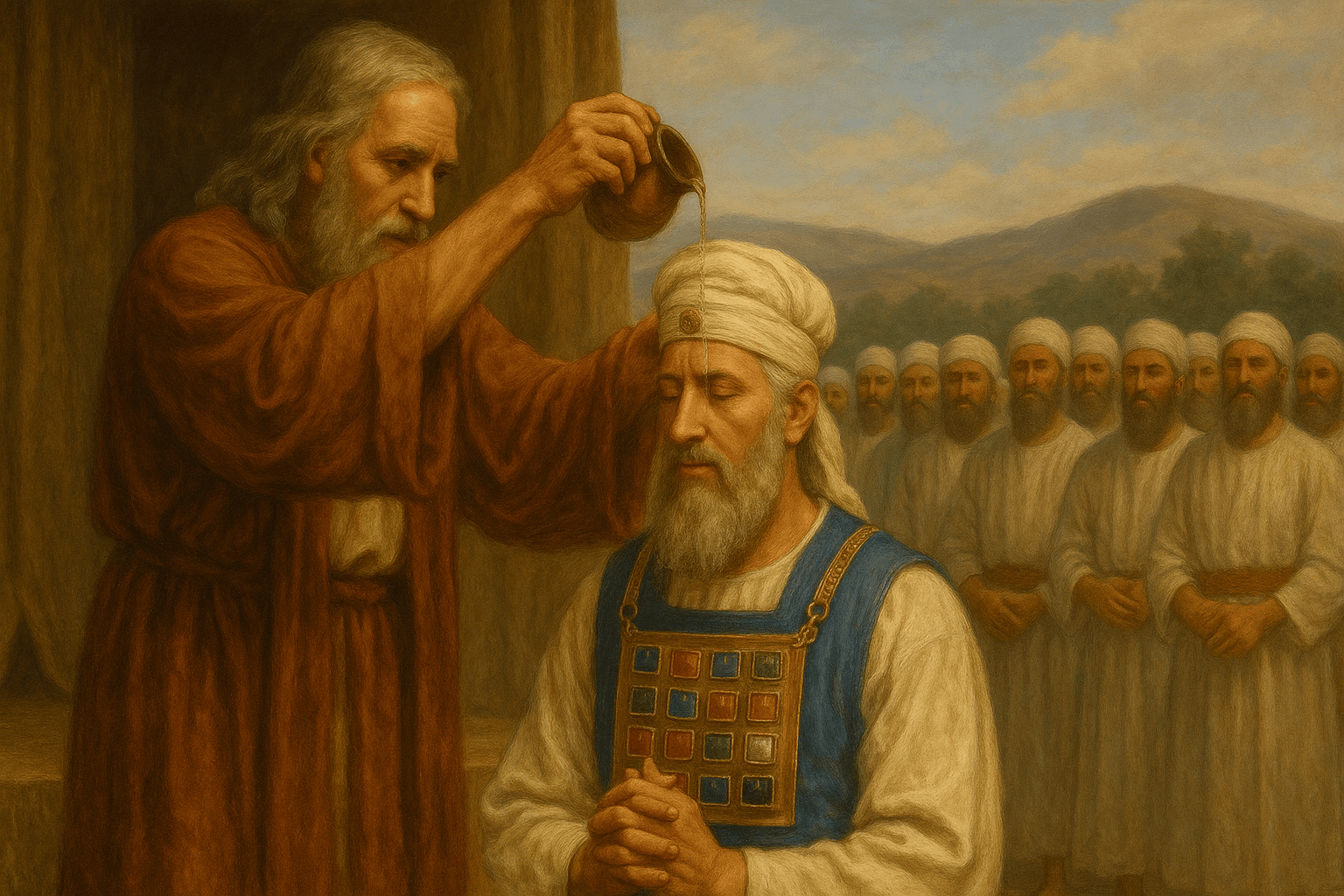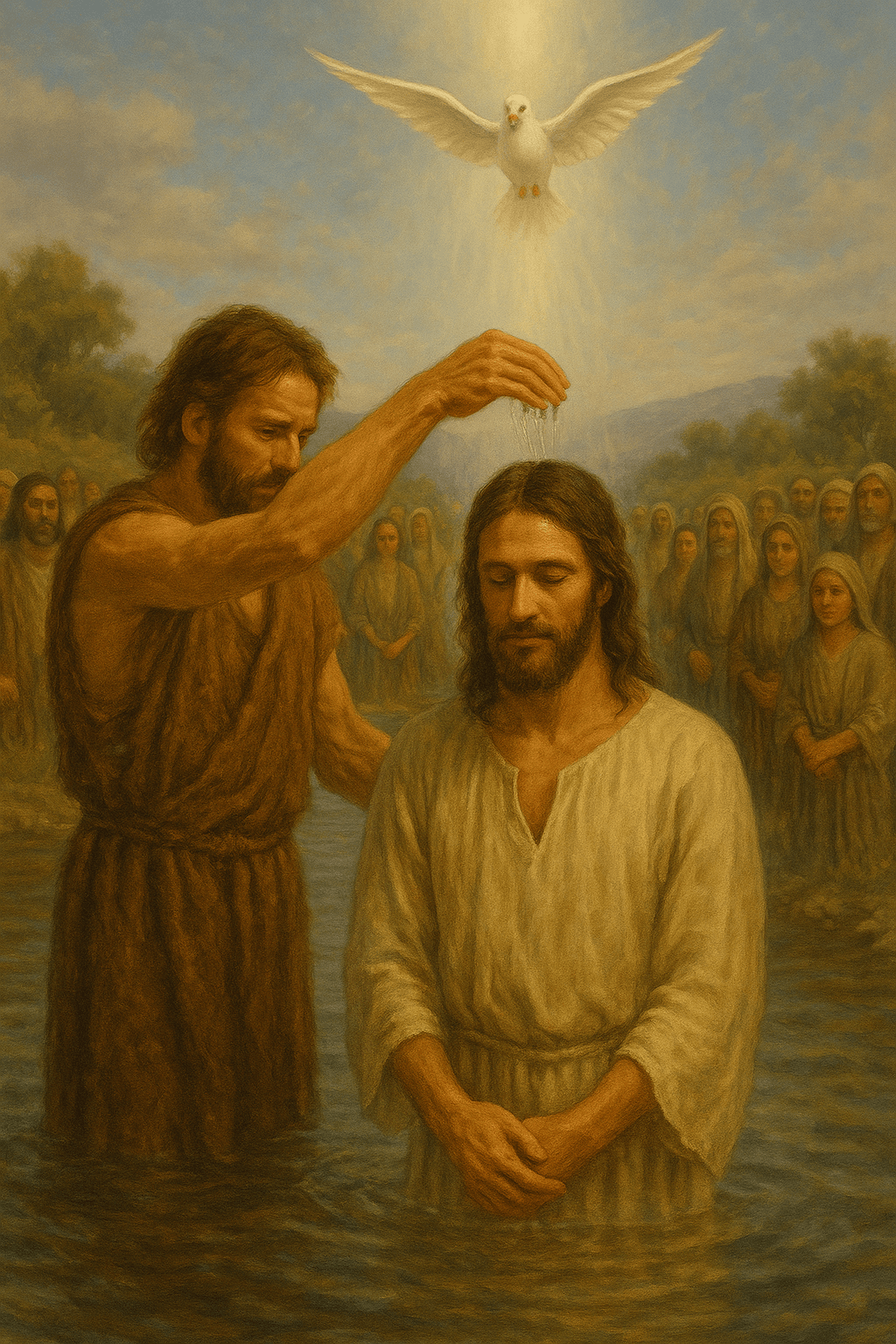The Significance of Jesus' Baptism
We know John the Baptist performed a baptism of repentance. We also know that Jesus was a man without sin. So why did the sinless Jesus Christ undergo John’s baptism of repentance?
Today, in the modern church, we often view baptism as a symbolic act—an outward declaration that we died with Christ and were raised with Him when lifted out of the water.
But when Jesus stepped into the Jordan River to be baptized by John, something far more profound than symbolism took place. This moment wasn’t just about identifying with sinners or marking the beginning of His public ministry—it was a divine ordination. Jesus’ baptism wasn’t merely a nod to Jewish customs; it was the moment Heaven declared Him the true and eternal High Priest. And the parallels to the Levitical priesthood—and even to the mysterious priest-king Melchizedek—are impossible to ignore.
Hebrews 10:1 (ESV)
“For since the law has but a shadow of the good things to come instead of the true form of these realities,
Let’s unpack the rich layers behind this pivotal event.
Washed Like a Priest: The Levitical Parallel
In Leviticus 8, Moses consecrates Aaron and his sons as priests. The ceremony begins with a ritual washing with water. Before a priest could offer sacrifices on behalf of the people, he had to be cleansed.
“Then Moses brought Aaron and his sons forward and washed them with water.” — Leviticus 8:6
“Then Jesus came from Galilee to the Jordan to be baptized by John.” — Matthew 3:13
Though Jesus was sinless, He submitted to this washing “to fulfill all righteousness.” Like the priests of old, He was being ceremonially set apart—not to offer animal sacrifices, but to offer Himself.
Anointed From Above: The Spirit vs. the Oil
Levitical priests were also anointed with oil, symbolizing the Holy Spirit’s empowerment for priestly service.
“He poured some of the anointing oil on Aaron’s head and anointed him to consecrate him.” — Leviticus 8:12

At Jesus’ baptism, something even more profound happened:
“...He saw the Spirit of God descending like a dove and alighting on Him.” — Matthew 3:16
Jesus wasn’t anointed with physical oil; He was anointed with the Holy Spirit Himself.
Priests Begin Service at Age 30
Numbers 4:3 (ESV) “From thirty years old up to fifty years old, all who can come on duty, to do the work in the tent of meeting.”
The age of 30 was the God-ordained starting point for priestly ministry. Jesus Started His Ministry and was Baptized at the age of 30.
Plublic declaration
In the Old Testament, it was both customary and divinely commanded for a priest’s ordination to be a public event. God designed the ordination process to be witnessed by the entire congregation of Israel, making it a formal declaration of the priest’s role, authority, and consecration before the people.
God the Father made the public declaration of His Son.
“And a voice from heaven said, ‘This is My beloved Son, in whom I am well pleased.’” — Matthew 3:17

Putting all of this Together.
The baptism of Jesus was the moment He assumed the role of our Chief High Priest in the flesh. He is the only and true High Priest. Aaron and the priests under the law were types and Shadows pointing to Jesus Christ.
Here were the Roles of High Priest under the Law.
- Mediator between God and people; Hebrews 5:1
- Offered sacrifices for sin; Leviticus 16; 4
- Entered Holy of Holies (once/year); Leviticus 16
- Wore holy garments; Exodus 28
- Burned incense; Exodus 30:7–8
- Oversaw Tabernacle/Temple; Numbers 3:32
- Taught and interpreted the Law; Malachi 2:7
- Died if approached God unworthily; Leviticus 16:2
Jesus Fullfilled and REPLACED all of this by becoming our Chief High Priest.
What do we have to do then? Believe in Him,
While Jesus is the Chief Priest, we also know that He has called ALL OF US into priesthood.
Revelation 1:5–6 (ESV)
“To Him who loves us and has freed us from our sins by His blood
and made us a kingdom, priests to His God and Father, to Him be glory and dominion forever and ever. Amen.”
1 Peter 2:9 (ESV)
“But you are a chosen race, a royal priesthood, a holy nation, a people for His own possession, that you may proclaim the excellencies of Him who called you out of darkness into His marvelous light.”
In conclusion, this post is not intended to debate whether water baptism should be practiced today. While I personally believe the Church would benefit from moving beyond symbolic rituals, the main purpose here is to highlight that Jesus’ baptism was not merely symbolic—it was His divine ordination in human flesh as the true and eternal High Priest, the one who restores our right standing with God the Father. And, the event was fulfilling the levitical priesthood ordination requirement as Jesus said; To fulfill all righeousness.
Luke 3:16 (ESV)
“John answered them all, saying, ‘I baptize you with water, but He who is mightier than I is coming... He will baptize you with the Holy Spirit and fire.’”